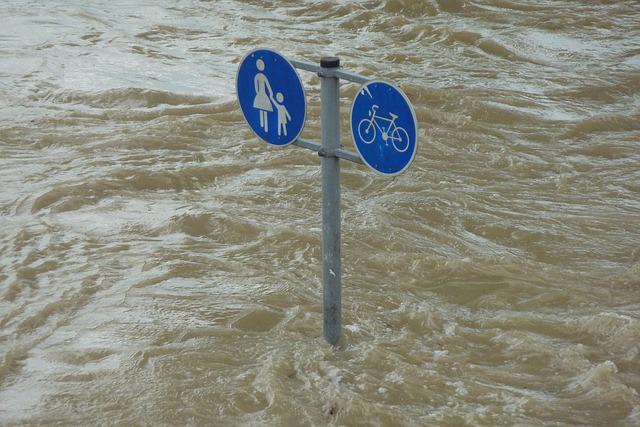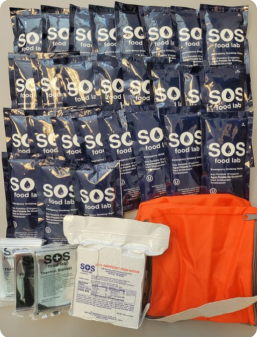Flooding is one of the most frequent natural disasters in the world. It is the most common natural disaster in the United States. Flooding may occur due to a hurricane, days of heavy rainfall, or thawing snow.
There may be a prior warning to a flood, but it may also be sprung on you without notice. Whichever the situation, there are steps you can take to keep yourself safe.
What Is Happening In Kentucky?
Last week, flooding raged through southeastern Kentucky, Missouri, Arkansas, Illinois, and Indiana. Kentucky saw the worst of the flooding with the deaths of 37 people.
The area received record-breaking amounts of rainfall from July 25-31, 2022. The areas most affected received more than 8in (20cm) of rainfall.
The devastation began on July 25. A series of thunderstorms came through St. Louis, Missouri, at times bringing 2 in (5.08cm) of rain per hour.
The rain reached eastern Kentucky on July 27 as it ran down hillsides. As a result, the area experienced devastating mudslides and flooding. 8-10in (20-25cm) of rain fell in 48 hours with another 4in (10.16cm) falling on July 31.
The people of southeastern Kentucky have faced flooding for generations. But, nothing could have prepared them for flooding of this extent.
Besides the 37 dead, over 1,300 people received rescuing. Officials say that it will take years for the area to rebuild as thousands of people lost their homes.
How To Prepare For A Flood
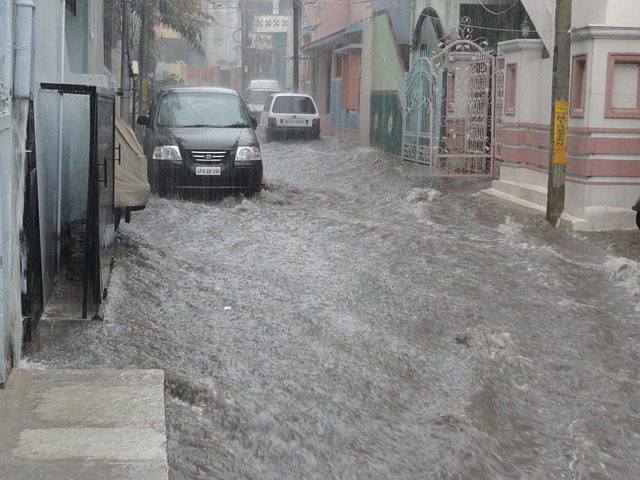
Everyone should have a plan in place for potential flooding, even if you live in an area not prone to flooding. Flooding can happen quickly, and at any time, so it’s important to stay safe.
Before the threat of a flood ever occurs, you should prepare yourself.
First, determine how at-risk your community is to flooding. Know their response plans should a flood occur.
Create a household evacuation plan that includes your pets. Make sure that your family has a way to get in touch with each other should you get separated.
What Should Be in Your Emergency Kits
You should also assemble an emergency preparedness kit. Here are some things to include in your emergency kit according to the American Red Cross:
- Water: 1 gallon per person, per day
- You should have a 3-day supply for possible evacuation, and a 2-week supply for in your home
- Non-perishable, easy-to-prepare foods
- You should have a 3-day supply for possible evacuation, and a 2-week supply for in your home
- Flashlight
- Radio: battery-powered or hand-crank
- Batteries
- First-aid kit
- 7-day supply of medications
- Multi-purpose tool
- Personal hygiene items
- Copies of personal documents
- Cell phone and charger
- Emergency contact information
- Cash
- Emergency blanket
- Maps of the area
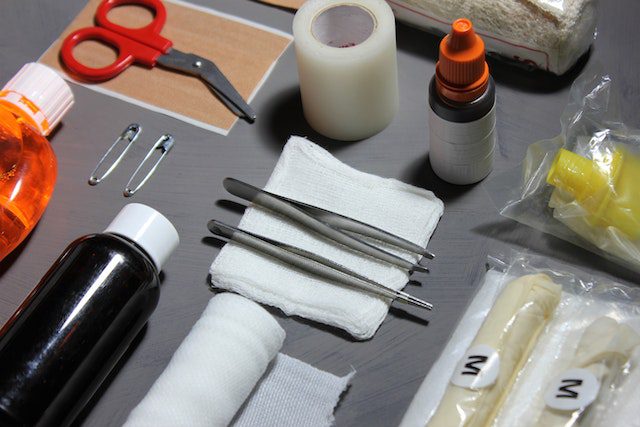
How To Stay Safe During A Flood
No one ever wishes to be caught in a flood. But, if you find yourself in such a situation, you can take steps to keep yourself safe.
Listen To Your Local Weather Station
The first step is to listen to your local weather stations and pay attention to the danger. Know the difference between a flood warning and a flood watch so you know which actions to take.
A flood watch means that a flood is possible, but not imminent. You don’t need to take immediate action, but keep your eyes peeled for any danger.
A flood warning means that flooding will occur very soon, or is occurring already. This is a very dangerous situation, and you should take immediate steps. Be prepared to evacuate quickly and seek shelter if needed.
Flooding can occur quickly or slowly, and flash floods may occur without any warning. Floods can leave you without power or transportation, and they can damage buildings.
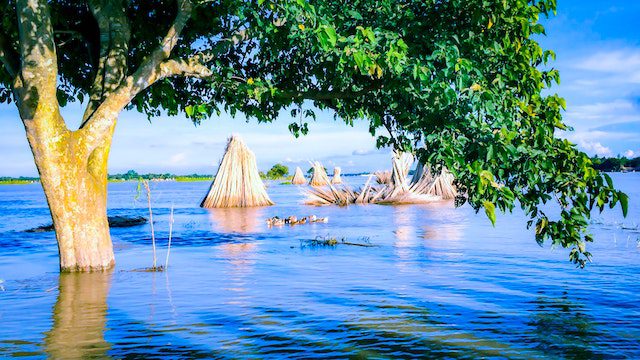
Seek Shelter
If your community has issued a flood warning, seek shelter immediately. The higher the ground, the better.
If you’re trapped in a building and can’t evacuate, get to the highest ground possible. Avoid enclosed attics as you could become trapped in the rising flood waters. Only move to a roof if you have nowhere else to go.
Avoid bridges over fast-moving water. When the water becomes too high, it can wash away a bridge without any warning.
Turn Around, Don’t Drown
NEVER attempt to walk, swim, or drive through flood waters. It only takes 6in (15.24cm) of moving water for a person to be knocked down and swept away. Debris within the flooding water makes the situation even more dangerous.
One of the leading causes of flood deaths are vehicles washing away. It’s incredibly difficult to tell how deep and fast water is moving across a roadway. It only takes 1ft (0.3m) of water for your vehicle to wash away.
If your car is caught in a flood, stay inside when possible. If your car is taking on water, escape the car and get to the roof.
Have Drinkable Water
In case of a flood, fresh, drinkable water is one of the most important things you can have available to you. It only takes a few days for someone to die without water. In the event that you’re trapped, drinkable water could save your life.
Have you heard that you should fill your bathtub with water for drinking during an emergency? This advice isn’t completely sound.
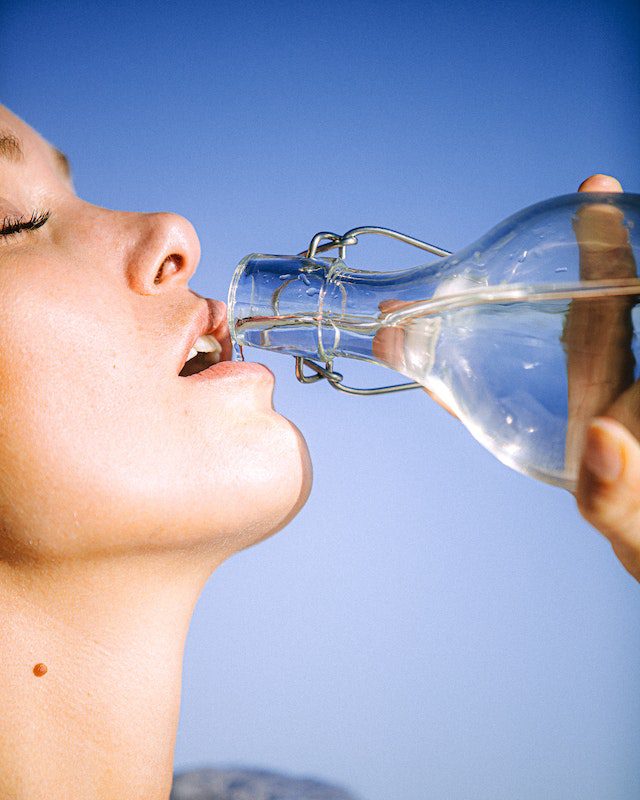
This is a good practice as you can use the water for washing up or flushing the toilets. But, lead from the bathtub’s glaze may leak into the water, leaving it unfit for drinking.
Instead, keep gallons of water stored in your home for drinking. We highly recommend SOS Water Pouches because they have a shelf-life of 5 years and can be easily stored anywhere–your home, car, RV, camper, boat and go-bags!
Conclusion
Floods are terrifying, and there won’t always be warning signs. But, there are steps you can take to prepare yourself for potential flooding. If a flood does come your way, you’ll know what to do to keep yourself and your family safe.
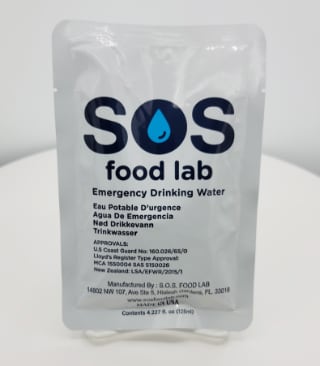
Seek higher ground, avoid flooded areas, and always have an emergency plan in place.
